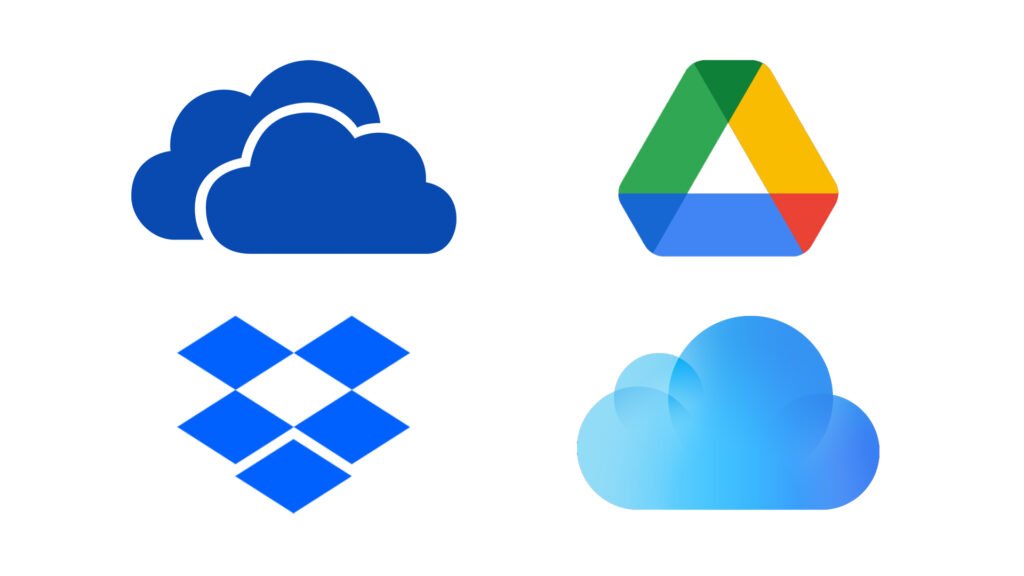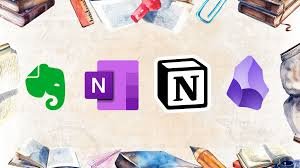Let’s be real. Take a quick look around your room, your office, your living space. Now take a look inside your head. See any parallels? If your desk is a chaotic mountain of papers and forgotten coffee mugs, chances are your mind feels a little… cluttered, too. It’s a feeling we all know: that low-grade hum of overwhelm that comes from simply having too much stuff.
We’re constantly told to declutter, to organize, to “Kondo” our lives into minimalist perfection. But for many of us, the process itself feels like a monumental chore. It’s draining, it’s emotionally taxing, and it’s the last thing we want to do after a long day.
But what if we’ve been looking at it all wrong? What if decluttering wasn’t about deprivation and grueling work, but about discovery and empowerment? What if the process itself could actually… spark joy?
This isn’t just a feel-good fantasy. It’s about shifting your perspective and, more importantly, equipping yourself with the right gear for the job. We’re not talking about fancy, expensive gadgets. We’re talking about simple, effective decluttering tools—some physical, some mental—that transform the task from a burden into a genuinely rewarding experience.
Table of Contents
If you’re ready to clear out the physical and mental cobwebs and create a space that energizes you, you’re in the right place. Forget the dread. Let’s dive into the five game-changing decluttering tools that will help you reclaim your space and your peace of mind.
1. The Decision-Making Trio: Your ‘Keep, Rehome, Release’ Command Center
The biggest hurdle in any decluttering project isn’t the physical labor; it’s the mental load of making thousands of tiny decisions. “Should I keep this? Does it work? Do I love it? Will I need it someday?” This decision fatigue is what usually causes us to give up and shove everything back in the closet.
Enter the Decision-Making Trio. This is more than just grabbing a few trash bags. It’s about setting up a clear, intentional command center for your sorting process.
What It Is:
This tool is a simple system of three clearly labeled containers. You can use boxes, laundry baskets, or sturdy bags. The key is to have them ready before you start, creating a frictionless workflow.
- The Treasure Chest (Keep): This box is exclusively for items you absolutely love and use. These are the things that, as Marie Kondo would say, “spark joy.” This could be your favorite cozy sweater, a book you reread every year, or a tool you use regularly. Be honest and selective. This isn’t the “I might need it someday” box; it’s the “My life is better with this in it” box.
- The Second-Life Bin (Rehome): This is for good-quality items that no longer serve you, but could bring value to someone else. Think clothes that don’t fit anymore, books you’ve read, or kitchen gadgets you never use. Framing this as “rehoming” rather than “getting rid of” changes the entire emotional dynamic. You’re not just tossing stuff; you’re participating in an act of generosity and sustainability.
- The Release Bag (Discard/Recycle): This is for the truly unsalvageable. Broken items, expired products, worn-out clothing, and actual trash. This is the container for guilt-free goodbyes. It’s about acknowledging that an item has completed its lifecycle and it’s time to let it go responsibly.
Why It Sparks Joy:
This system demolishes decision fatigue. By pre-defining the only three possible outcomes for any item, you streamline the entire process. Instead of an overwhelming single pile of chaos, you create three streams of order. Watching the “Rehome” bin fill up brings a sense of satisfaction, knowing you’re contributing to your community. Watching the “Release” bag fill up provides a profound sense of liberation. It’s a clear, visual representation of your progress, turning a messy task into a satisfying, assembly-line-like project.
2. The Digital Zen Master: Your Arsenal of Tidying Apps
In the 21st century, some of our worst clutter isn’t even visible. It lives on our screens, silently draining our focus and energy. We’re talking about the 15,000 unread emails, the desktop littered with random files, and the camera roll with 50 blurry photos of the same sunset. Digital clutter is still clutter, and it demands its own set of specialized decluttering tools.
What It Is:
This “tool” is a curated suite of apps and services designed to bring order to your digital chaos. It’s about using technology to fight the negative side effects of technology.
- Cloud Storage (Google Drive, Dropbox, iCloud): Think of this as the ultimate digital attic. Instead of hoarding thousands of documents and photos on your computer’s hard drive (slowing it down and creating a mess), create an organized folder system in the cloud. You can create archives for old projects, a secure folder for important documents (scanned passports, contracts), and a central hub for all your photos.

- Photo Organizers (Google Photos, Mylio Photos): Tackling a decade’s worth of digital photos feels impossible. Apps like Google Photos use AI to automatically group faces, locations, and themes, making it incredibly easy to find what you’re looking for. More powerfully, they can identify and help you delete duplicates and blurry shots, clearing out gigabytes of useless data in minutes.


- Note-Taking Hubs (Notion, Evernote, OneNote): How many brilliant ideas, to-do lists, and random bits of information are scattered across sticky notes, random text files, and your brain? A robust note-taking app acts as a “second brain.” It’s a single, searchable place for everything, decluttering your mind and your workspace simultaneously.

- Inbox Purgers (Unroll.Me): If your email inbox is a source of daily anxiety, a service like this can be life-changing. It shows you a list of all your subscriptions, allowing you to unsubscribe from junk newsletters with a single click. The feeling of seeing your daily influx of email drop by 80% is pure, unadulterated joy.

Why It Sparks Joy:
Taming your digital world provides an incredible sense of control and lightness. There’s a deep psychological relief in knowing your precious memories are safe and organized, your important files are accessible from anywhere, and your inbox is a tool for communication, not a source of stress. This digital decluttering frees up mental bandwidth you didn’t even know you were losing, allowing for more focus and creativity.
3. The Space-Saving Illusionist: Genius Storage That Hides in Plain Sight
Once you’ve done the hard work of purging, the last thing you want is for your remaining possessions to look like a jumbled mess. Effective decluttering isn’t just about getting rid of things; it’s about creating a beautiful and functional home for the things you keep. This is where smart storage becomes a tool for joy.
What It Is:
This isn’t about buying a hundred ugly plastic bins. It’s about investing in versatile, often multi-functional, and aesthetically pleasing storage solutions that maximize your space and calm your visual field.
- Go Vertical: Most of us live our lives on the horizontal plane. Look up! Walls are your best friend. Use floating shelves to display cherished items, a stylish pegboard in the office or garage for tools and supplies, or an over-the-door organizer with clear pockets for shoes, accessories, or cleaning supplies.
- Exploit Hidden Gaps: That awkward 6-inch gap between your fridge and the wall? There’s a slim rolling cart for that, perfect for spices and oils. The vast wasteland under your bed? Use low-profile storage containers with wheels to easily store out-of-season clothes or extra bedding.
- Demand Double-Duty Furniture: Make your furniture work for you. An ottoman isn’t just a footrest; it’s a hidden home for blankets and board games. A lift-top coffee table can store remotes and magazines while also serving as a comfortable work surface. A bed frame with built-in drawers eliminates the need for a bulky dresser.
- Divide and Conquer: For the spaces you can’t change, like drawers and cabinets, use dividers. Bamboo drawer organizers for the kitchen utensil drawer, clear acrylic dividers for makeup, and honeycomb-style organizers for socks and ties immediately transform a chaotic jumble into a satisfying mosaic of order.
Why It Sparks Joy:
Our environment has a profound impact on our mood. A visually calm and orderly space reduces cortisol (the stress hormone) and promotes a sense of peace. When everything has a designated “home,” tidying up becomes a two-minute task, not an hour-long project. Seeing your cherished items displayed beautifully, rather than crammed in a drawer, allows you to appreciate them more. Smart storage is the tool that sustains the joy of decluttering long after the initial purge is over.
4. The Gatekeeper Protocol: Mastering the ‘One In, One Out’ Habit
You’ve spent a whole weekend clearing out your closet. It looks amazing. You feel amazing. Then, a few months later, it’s somehow full again. The clutter has crept back in. This is the most common decluttering failure. The most powerful tool against this is not a physical object, but a mental one: a simple, unbreakable rule.
What It Is:
The Gatekeeper Protocol, commonly known as the “One In, One Out” rule, is a habit you cultivate to maintain equilibrium in your home. It’s a non-negotiable personal policy: for every new non-consumable item that comes through your door, a similar item must leave.
- Buy a new pair of jeans? An old pair gets donated.
- Get a new coffee mug as a gift? An old, chipped one you never use gets retired.
- Bring home a new hardcover book? A paperback you’ve already read goes into the “Rehome” bin for a friend or a local Little Free Library.
Why It Sparks Joy:
This mental tool is empowering because it puts you firmly in the driver’s seat of your own consumption. It short-circuits the impulse to buy mindlessly. Before making a purchase, you’re forced to ask, “Is this new item so great that I’m willing to let go of something I already own?”
This simple rule prevents the slow, insidious creep of clutter and preserves the peaceful environment you worked so hard to create. It transforms you from a passive consumer into a mindful curator of your own life. The joy comes from the sustained sense of control and the freedom from ever having to do a massive, overwhelming decluttering session again. It’s a tool for lasting peace.
5. The Momentum Machine: Your Progress Journal & Celebration Kit
Decluttering can feel like a long, thankless journey, especially when you’re tackling a big space. It’s easy to lose motivation when you’re surrounded by mess and feel like you’re not making a dent. This is where a tool for tracking progress and celebrating wins becomes absolutely essential.
What It Is:
This is your personal motivation system. It’s a combination of documenting your journey and rewarding your effort, turning a marathon into a series of satisfying sprints.
- The “Before” Photo: This is the most crucial first step. Before you touch anything, take a photo of the space in its full, cluttered glory. It might feel embarrassing, but this photo is your benchmark. It’s your “Point A.”
- The Decluttering Log: This can be a simple notebook or a note on your phone. For each session, jot down what you accomplished. “Saturday: Sorted through the entire bookshelf. Rehomed 25 books. Filled one Release bag.” This log provides concrete proof of your effort, even when the overall space still feels messy.
- The “After” Photo: Once you’ve finished a section (a drawer, a closet, a room), take an “After” photo from the same angle as the “Before” shot. Now, put them side-by-side. The visual transformation is often shocking and provides a massive hit of dopamine.
- The Celebration Ritual: Plan small, non-clutter-related rewards for hitting your milestones. Finish the kitchen pantry? Treat yourself to a coffee from your favorite café. Clear out the entire garage? Take a day trip to a nearby park. Acknowledging your hard work reinforces the positive behavior.
Why It Sparks Joy:
Our brains are wired to respond to progress and reward. This system hacks that wiring for our benefit. Seeing the stark contrast between “Before” and “After” photos provides undeniable proof of your power to create positive change. Celebrating small wins breaks the process down into manageable, enjoyable chunks and builds a positive feedback loop. It reframes the narrative from “I have so much left to do” to “Look how far I’ve come.” This momentum is what carries you through the entire process with enthusiasm instead of dread.
Your Decluttering Questions, Answered (FAQ)
Diving into a decluttering project can bring up a lot of questions. That’s completely normal! Think of this as your official troubleshooter’s guide. Here are answers to some of the most common questions we hear.
Q1: I’m completely overwhelmed by the sheer amount of stuff. Where in the world do I even begin?
A: That feeling of being paralyzed by the mess is the #1 reason people procrastinate. The secret is to think small. Ridiculously small. Don’t look at the whole mountain; just look at a single stone you can move today.
Try the “One Drawer” method. Pick the messiest, most annoying drawer in your house—the infamous junk drawer is a perfect candidate. Set a timer for 15 minutes, grab your “Decision-Making Trio” of boxes, and just tackle that one small space. When you succeed (and you will!), you get an immediate win and a boost of momentum. That’s the fuel you’ll use to tackle one small shelf tomorrow.
Q2: How long should this take? I feel like I’m moving at a snail’s pace.
A: There is no official timeline, and anyone who tells you otherwise is selling something! This is your journey, not a race. The time it takes depends on your schedule, your energy levels, and how many decisions you have to make.
Decluttering is an act of self-care, not a punishment. If you only have the energy for 10 minutes a day, that’s 70 minutes of progress a week! Consistency is far more powerful than intensity. Go at the speed that feels right for you. The goal is a peaceful space, not a stressful deadline.
Q3: What do I do with sentimental items? I feel so guilty getting rid of them, but they’re taking over!
A: This is the emotional heart of decluttering. First, it’s crucial to separate the item from the memory. The memory lives in your heart and mind, not in the object itself.
For items that genuinely spark joy, give them an honored place in your “Treasure Chest” or display them beautifully. For items that you feel obligated to keep (like grandma’s chipped vase you never liked), consider this liberating option: Take a high-quality photograph of the item. Create a digital album titled “Precious Memories.” Then, you can release the physical object with gratitude. You’re honoring the person and the memory, not burdening yourself with the physical item.
Q4: Is it really so bad to keep things “just in case”? I’m worried I’ll regret getting rid of something.
A: The “just in case” trap is powerful! It’s rooted in a fear of scarcity. But let’s reframe it. That “just in case” item is costing you something right now: physical space, mental energy, and visual peace. It’s a tenant in your home that isn’t paying rent.
Try the 20/20 Rule. If you can replace the item for less than $20 and in less than 20 minutes from your home, it’s safe to let it go. You’ll be surprised how many of your “just in case” items fall into this category. Free yourself from being a storage unit for hypothetical problems.
Q5: My partner/family isn’t on board and keeps bringing more clutter into the house. What can I do?
A: You can’t force another person to change, and trying will only lead to conflict. The most effective strategy is to lead by example.
Start with your own belongings and your personal spaces (your side of the closet, your home office, your drawers). When your family sees the positive change in your space—and more importantly, in your mood—they may become more curious and open to the idea. Talk about how the process makes you feel calmer and more focused, rather than criticizing their mess. You can also negotiate “clutter-free zones” in shared areas, like the coffee table or kitchen counters, as a starting point.
Q6: What’s the actual difference between decluttering and organizing?
A: This is a fantastic question, and the distinction is critical. Think of it like cooking:
- Decluttering is prepping your ingredients—choosing only the fresh, high-quality things you actually want to use and getting rid of the expired or unwanted stuff. It is the act of subtraction.
- Organizing is taking those chosen ingredients and arranging them beautifully on the plate. It is the act of creating a system.
You must declutter first. If you skip that step and just buy a bunch of pretty bins to organize your clutter, all you have is a neatly organized mess. True peace comes from owning less, not from shuffling things around.
Q7: I did a huge declutter last year, but now the mess is back. What did I do wrong?
A: You didn’t do anything “wrong”! This is incredibly common and it just means one of your key decluttering tools was missing: the maintenance system. This is where “The Gatekeeper Protocol” (Tool #4) becomes your new best friend. Clutter is the result of daily habits, so a clutter-free life requires a new daily habit—the “one in, one out” rule. By consciously choosing what comes in, you stop the problem at the source and protect the peace you worked so hard to create.
Your Space is Your Story. Time to Edit.
Decluttering is so much more than cleaning. It’s an act of self-care. It’s a way of editing your life’s story, deliberately choosing which elements to keep in the frame and which to lovingly release. It’s about creating a physical environment that supports your mental and emotional well-being.
By equipping yourself with these five decluttering tools—The Decision-Making Trio, the Digital Zen Master, the Space-Saving Illusionist, the Gatekeeper Protocol, and the Momentum Machine—you’re not just tackling clutter. You’re building a system for a more intentional, peaceful, and joyful life.
Stop waiting for the “perfect time” to start. The perfect time is now. Pick one area, choose one tool, and begin.
We want to hear from you! What are your go-to decluttering tools or strategies that spark joy for you? Head down to the comments below and share your best tips with the MindGearMen community. Let’s build a clutter-free future together!


